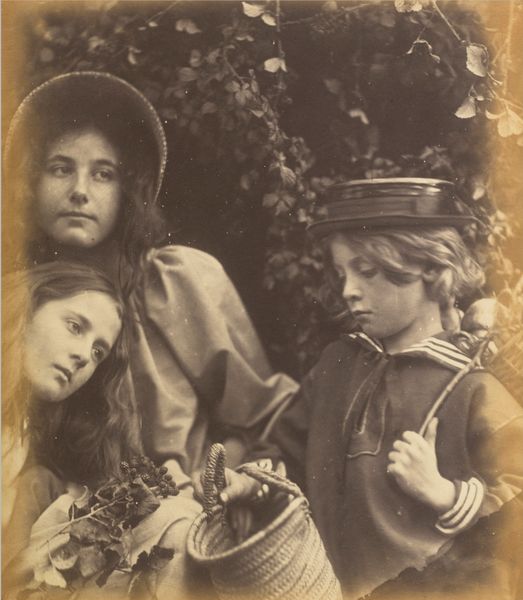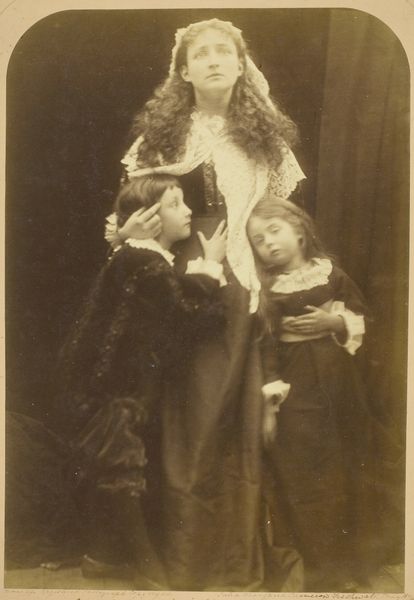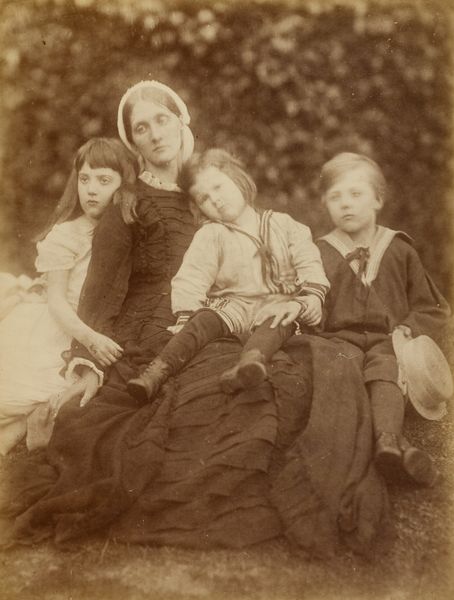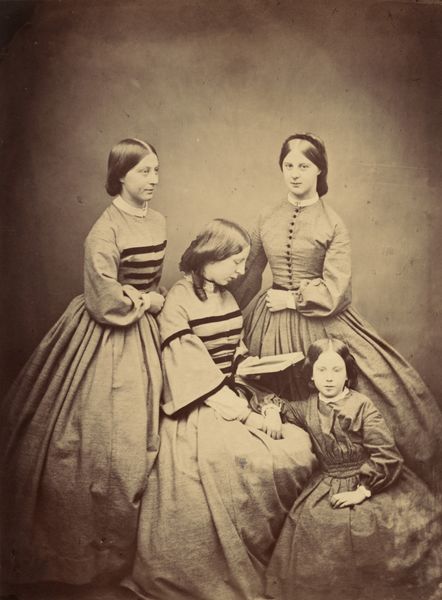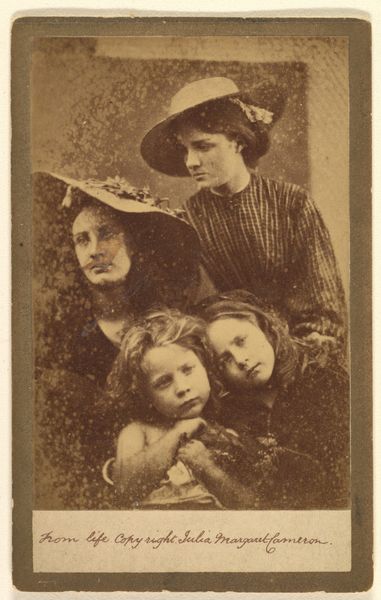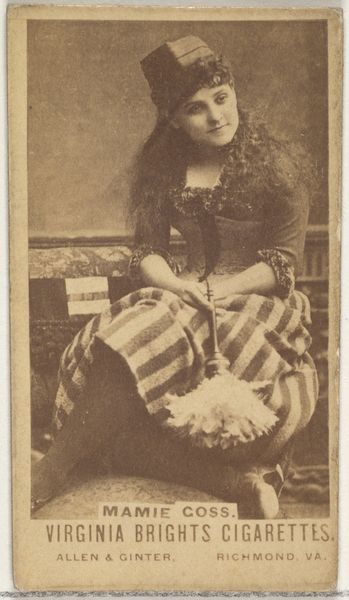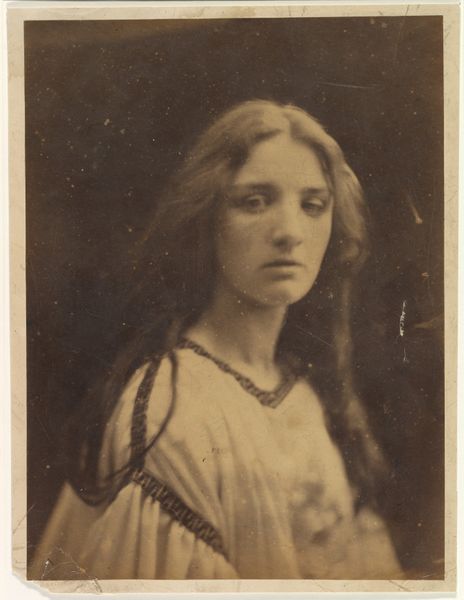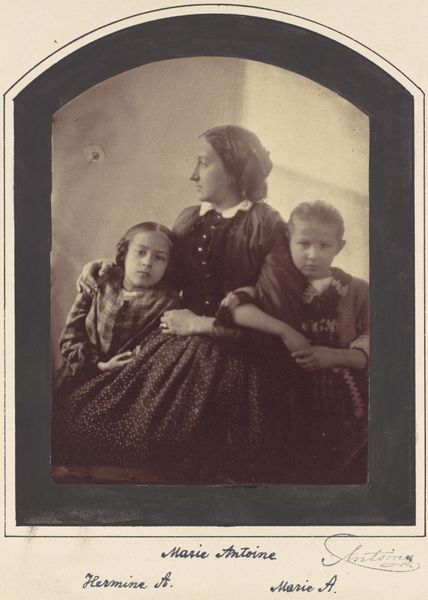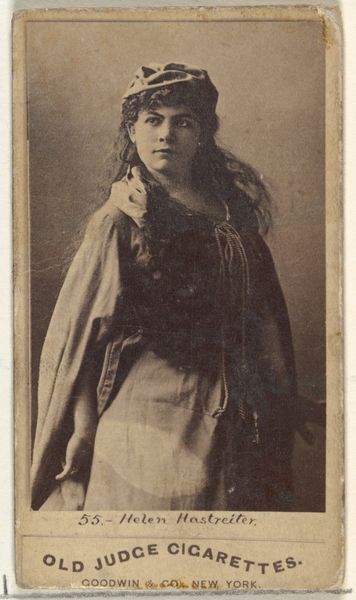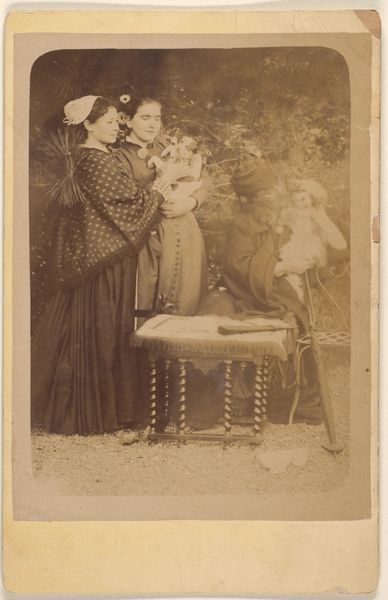
Dimensions: image: 35.08 x 29.21 cm (13 13/16 x 11 1/2 in.) mount: 57.15 x 46.36 cm (22 1/2 x 18 1/4 in.) mat: 71.12 x 55.88 cm (28 x 22 in.)
Copyright: National Gallery of Art: CC0 1.0
Curator: Let’s turn our attention to "A Minstrel Group," a work from 1867 by Julia Margaret Cameron. It’s an albumen print, typical of her soft-focus style, showcasing a carefully arranged group of figures. Editor: It’s striking—the sepia tones give it this hazy, dreamlike quality. The children seem almost caught between worlds, like characters from a fairytale. They look sad or, perhaps, simply melancholic. Curator: The composition certainly contributes to that impression. Cameron's use of light and shadow, particularly the shallow depth of field, emphasizes the faces and the texture of the fabrics. The older girl on the left is slightly out of focus, drawing our eye instead to the details in the foreground. It's all rather stage-managed. Editor: Yes, the staging feels quite deliberate, almost like a tableau vivant. But the focus softens the rigidity—it lets the viewer fill in the narrative. The girl with the lute looks so earnest; the one in the feathered hat seems lost in thought. I wonder what tune they’re trying to play or maybe it is Cameron attempting to evoke the medieval? Curator: Given her association with the Pre-Raphaelites, this is likely. They embraced romanticism and its thematic connections with medieval subjects. Look closely, for instance, at the treatment of drapery, which falls in carefully articulated folds across their costumes, emulating classical art. Editor: Yet, unlike academic painting, there’s an immediacy, a rawness to it that keeps it from feeling stuffy. I find this piece strangely unsettling yet full of longing. Curator: Precisely. Cameron's deliberate imperfections challenge our assumptions of photographic realism. In a time fixated on perfect representation, she deliberately explores subjective truth and personal feeling. Editor: Yes! And there’s the magic. These blurred edges, the soft focus… It’s not about perfection, but feeling. I think I understand why this piece still resonates so profoundly today.
Comments
No comments
Be the first to comment and join the conversation on the ultimate creative platform.

